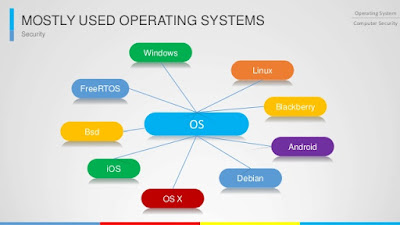Here’s What You Need To Know About Operating System
An OS is system software that manages hardware and software resources and provides common services for PC programs. The OS may be a part of the system software in a computer system. Application programs sometimes need an OS to perform. An OS (OS) is software, consisting of programs and information, that runs on computers and manages hardware resources and provides common services for the execution of numerous applications software. For hardware functions like input and output and memory allocation, the OS acts as an associate intermediate between programs and hardware of the computer. operative systems are found on several devices that contain a computer—from cellular phones and computer game consoles to net servers and supercomputers. Time-sharing operating systems schedule tasks for active use of the system and will additionally service for the PC Programs.
For hardware functions like input and output and memory allocation, the OS acts as an associate inter mediator between application programs and the hardware, though the applications are sometimes directed executed by the hardware. operating systems are found on any device that contains a computer—from cellular phones and game consoles to supercomputers and internet servers.
 Examples of most popular operating systems for personal computers are Microsoft Windows, Mac OS X, and GNU/Linux. In this Blog, you'll be able to get the list of all operating Systems available! Before running an operating Make sure that:-
Examples of most popular operating systems for personal computers are Microsoft Windows, Mac OS X, and GNU/Linux. In this Blog, you'll be able to get the list of all operating Systems available! Before running an operating Make sure that:-- The operating Systems are fully free from any type of charge.
- Be sure that you download the operating Systems from authenticated websites only.
Types of Operating Systems
Single- And Multi-Tasking Operating Systems
A single-tasking system will solely run one program at a time whereas a multi-tasking operating system permits more than one program to run concurrently. This can be achieved by time-sharing, dividing the out the processor time between multiple processes that are interrupted repeatedly in time slices by a task-scheduling system of the operating system. Multi-tasking could also be subdivided into preemptive and cooperative. In preemptive multitasking, the operating system slices the central processor time and dedicates a slot to every program. Unix-like operating systems, e.g., Solaris, Linux, also as AmigaOS support preemptive multitasking. Cooperative multitasking is achieved by counting on every method to produce time to the opposite processes during a outlined manner. 16-bit versions of Microsoft Windows used cooperative multi-tasking. 32-bit versions of each Windows NT and Win9x used preemptive multitasking.
Single- And Multi-User
Single-user in operating systems don't have any facilities to differentiate users, however, might enable multiple programs to run in a cyclic manner. A multi-user operating system extends the essential concept of multi-tasking with facilities that establish processes and resources, like disc space, acceptance to multiple users, and also, the system permits multiple users to move with the system at a similar time. Time-sharing in operating system schedule tasks for economical use of the system and should additionally embrace accounting package for price allocation of processor time, mass storage, printing, and alternative resources to multiple users.
Distributed
A distributed operating system manages a bunch of distinct PC’s and makes them seem to be one computer. The development of networked computers that would be coupled and communicate with one another gave rise to distributed computing. Distributed computations are applied on quite one machine. once computers in a cluster in cooperating, they make a kind of distributed system.
Templated
In an OS, distributed and cloud computing context, templating refers to making a virtual machine image as a guest operating system, then saving it as a tool for multiple running virtual machines. The technique is employed each in virtualization and cloud computing management and is common in massive server warehouses.
Embedded
Embedded operative systems are designed to be employed in embedded systems. They're designed to work on tiny machines like PDAs with less autonomy. They're able to operate with a restricted range of resources. They're terribly compact and intensely profitable by design. Windows CE and Minix 3 are some samples of embedded operative systems.
Real-Time
A real-time operating system is the one that guarantees to process the methods at intervals with a precise amount of time. A real-time OS could also be single- or multi-tasking, however as multitasking, it uses specialized planning algorithms so as the settled behavior is achieved. Associate event-driven system switches between tasks supported their priorities or external events whereas time-sharing operative systems switch tasks supported clock interrupts.





